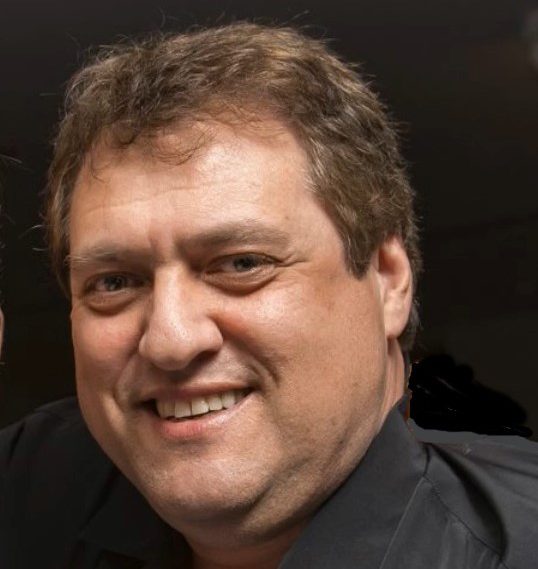click to dowload our latest edition
CLICK HERE TO SUBSCRIBE TO OUR NEWSLETTER


Published
3 years agoon
By
Dave BloomThe outgoing manhig (leader) of South African Habonim Dror, Errol Anstey, took his departure from the youth movement after 20 years of service in an online Zoom call with nearly 300 current and former members, friends, and family.
“I agreed to take the job for a year or two back in 2000, and never dreamt it would end up being 20 years of challenging but hugely satisfying work,” Anstey said in an emotional speech to his audience from around the world.
In the late 1990s, the movement had dropped in numbers, finances were in a mess, and the well-known Onrust campsite was in bad shape, former shaliach Ronen Segall recalled. “Errol was the obvious choice for someone with deep knowledge of the movement, its workings, and its campsite. In my eyes, Errol became Habonim’s true hero, a superman without a cape but full of capability.”
In a short space of time, Anstey led a significant turnaround for Habonim along with the team of shlichim and Habonim leadership. His fundraising, finance, and administration skills shone, and over his term as manhig an estimated R20 million has been raised and invested in the Onrust campsite to make it one of the most sought-after and valuable campsites in South Africa.
“This has enabled the movement not only to maintain the site to a high level, but the revenue has helped finance many of the movement’s activities,” Anstey proudly told his audience.
The traditional role of the manhig since the founding of SA Habonim Dror was always to be the “adult in the room” to act as a guide and mentor to the movement’s young leadership. Former mazkira klalit (general secretary) of Habonim from 2005, Micaela Browde, paid tribute to Anstey saying, “You were really a stalwart for us, you fought for us, you had our backs, you made sure we were supported, guided, and you did so with strength, humility, and humour.”
Anstey described some of the challenges during his stint including differences of opinion and sometimes open confrontation with mainstream Jewish community leadership when Habonim was critical of some of Israel’s actions. “It wasn’t easy to be a lone voice for progressive, liberal thinking as South Africa’s community became predominantly conservative,” he said with his usual frankness.
Another mazkir klali, Daniel Sussman from 2019, described Anstey’s catch phrase as “do everything, all the time, never sleep”. This succinctly summed up for him the endless number of projects and activities which Anstey led over the past two decades on behalf of Habonim.
Stanley Bergman, originally from Port Elizabeth and now in New York, the national treasurer for Habonim in 1968, paid tribute to Anstey’s enormous efforts to support several generations of Habonim members. He praised him for his ability to connect with graduates from the movement around the world and develop a donor community to support the Habonim Foundation which he initiated.
Anstey spoke of the erratic provision of Habonim shlichim from Israel over the years, and how he had additionally become a shaliach himself, which meant mentoring the leadership and members of the movement. He emphasised that he had “the privilege of working with the cream of South African Jewish youth” and said “there was nothing more fulfilling than working with inspired youth”. Their activism had motivated him to run successfully for public office in 2011 as a member of the Democratic Alliance.
During the Zoom session, many participants showered praise on Anstey’s term as manhig including Isaac Herzog, the chairperson of the Jewish Agency for Israel, who acknowledged the “outstanding contribution” that he had made to Habonim over so many years.
Former mazkir klali in the early 1980s, Stephen Pincus, expressed his appreciation for Anstey’s earlier roles as camp organiser at one of the largest Onrust camps ever, and later in spearheading the 50th anniversary celebrations of the movement.
“It was clear from those early years that Errol had that obvious aptitude for organisation along with a commitment to the movement,” he said. “Little did we know that we unleashed a formidable force which reverberated in the movement for more than 40 years.”
Anstey told the audience that his two children, Saul and Talia, had followed in his footsteps, having attended 12 Onrust camps and later became his “eyes on the ground” regarding movement dynamics. He also noted that it was probably an unprecedented situation that they had actually left the movement before their father did.
Anstey warmly welcomed the new incoming manhig, Wayne Sussman, in his usual modest style saying how satisfying it was for him to hand over the mantle to “someone who will be better than me and will take Habonim to new heights”.
Sussman responded in the session with his usual passionate style, describing the six previous manhigim who preceded him as “giants on whose shoulders we stand”. He lamented the fact that the Habonim leadership was on a Zoom call and not at the annual Onrust camp, and how challenging it was going to be in 2021 without the lessons learned and experiences from machaneh.
“Our first task will be to assist the 2021 bogrim led by the new mazkir, Aaron Sher, to capture some of the magic which will be lost, but I’m confident we can do it,” said Sussman.
